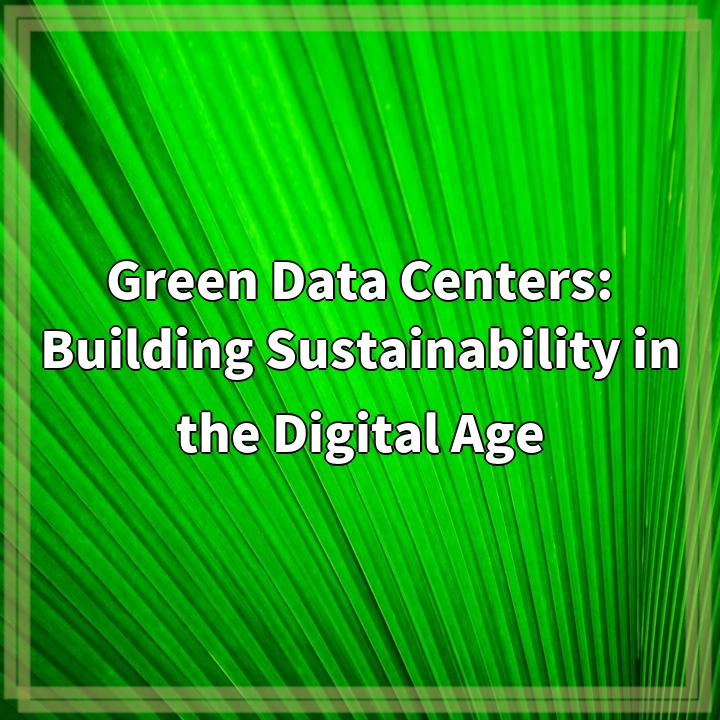
What is a Green Data Center?
Data centers are the backbone of our digital infrastructure, supporting the storage, processing, and distribution of immense amounts of data. However, traditional data centers are known for their significant energy consumption and carbon emissions. This is where the concept of green data centers comes into play.
A green data center, also known as a sustainable data center or an eco-friendly data center, is designed to minimize environmental impact by reducing energy consumption, utilizing renewable energy sources, and optimizing resource efficiency. These data centers adopt various strategies and technologies to achieve sustainability goals while still meeting the growing demands of the digital age.
Real-World Problems Associated with Green Data Centers
High Energy Consumption
Data centers require substantial amounts of electricity to power and cool their servers. As data generation and usage continue to explode, energy consumption becomes an escalating concern. The constant demand for energy puts strain on existing power grids and contributes to greenhouse gas emissions, contributing to climate change.
Waste Heat Disposal
Data centers generate a significant amount of waste heat due to the continuous operation of servers and cooling systems. Proper disposal of this waste heat is crucial to prevent it from negatively impacting the environment. Innovative solutions, such as using waste heat for nearby buildings or district heating systems, can help reduce heat waste and provide a more sustainable way of managing excess heat.
E-Waste Generation
With the rapid advancement of technology, data centers need to regularly upgrade their hardware to keep up with the demands of data processing. This results in a significant amount of electronic waste, or e-waste, being generated. E-waste poses environmental and health risks if not properly managed and recycled. Green data centers strive to address this issue by implementing responsible e-waste management practices.
Water Usage
Data centers require water for cooling purposes, and the large-scale water consumption can have detrimental effects on local ecosystems, particularly in areas with water scarcity or high water stress. Implementing water-efficient technologies, such as air-side economization or water recycling systems, can help mitigate the impact of data centers on water resources.
Carbon Footprint
One of the major concerns with traditional data centers is their substantial greenhouse gas emissions, primarily from the burning of fossil fuels for electricity generation. Green data centers aim to reduce their carbon footprint by adopting renewable energy sources, such as solar or wind power, implementing energy-efficient technologies, and practicing carbon offsetting strategies.
Addressing these real-world problems associated with green data centers is crucial for creating a sustainable and environmentally responsible digital infrastructure in the modern era. By prioritizing energy efficiency, resource optimization, and responsible waste management, green data centers can play a significant role in building a greener and more sustainable future.

Solutions for Green Data Centers
Energy Efficiency Measures
Implementing energy-efficient technologies, such as server virtualization, intelligent cooling systems, and power management solutions, can significantly reduce the energy consumption of data centers. By optimizing energy usage, green data centers can minimize their environmental impact and operating costs.
Renewable Energy Integration
Green data centers aim to transition to renewable energy sources, such as solar and wind power. By generating clean energy on-site or sourcing it from nearby renewable energy facilities, data centers can reduce their reliance on fossil fuels and decrease their carbon footprint.
Heat Recovery and Reuse
Efficient heat recovery systems can capture and repurpose waste heat generated by data centers. This heat can be redirected for space heating or used in nearby facilities, reducing the need for additional energy consumption. By maximizing the utilization of waste heat, data centers can minimize their environmental impact and contribute to energy conservation.
Responsible E-Waste Management
Implementing proper e-waste management practices, such as recycling and responsible disposal, can minimize the environmental and health hazards associated with electronic waste. Green data centers collaborate with certified e-waste recyclers to ensure that obsolete hardware is recycled or repurposed, reducing the burden on landfills and conserving valuable resources.
Water Conservation Strategies
Data centers can adopt water-efficient cooling technologies, such as air-side economization and water recycling systems. These strategies reduce reliance on fresh water resources and minimize the environmental impact of water consumption. Additionally, water-efficient landscaping practices can further contribute to water conservation efforts.
Carbon Offset Initiatives
Data centers can invest in carbon offset programs to compensate for their remaining carbon emissions. This involves supporting projects that reduce greenhouse gas emissions, such as renewable energy projects or reforestation initiatives. Carbon offsetting provides an avenue for data centers to neutralize their environmental impact and contribute to global climate action.
Implementing these solutions and practices in green data centers will help create a more sustainable and environmentally friendly digital infrastructure.















